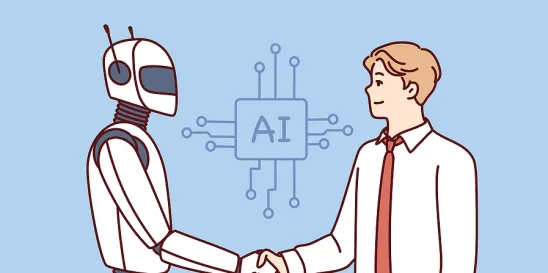Inventors and patent practitioners filing patent applications before U.S. Patent and Trademark Office (USPTO) may have an obligation to disclose if artificial intelligence (AI) is used in the innovation process.
Everyone involved in the filing and prosecution of a U.S. patent application has a duty to disclose to the USPTO all information which is materially relevant in assessing the patentability of the invention. This duty of disclosure is a serious one: deliberately withholding material information from the USPTO can result in an invalid and unenforceable patent.
Under the duty of disclosure, the information that is currently provided to the USPTO usually consists of prior art documents found by foreign patent offices, as well as publications that the applicant is aware of that describe devices or methods similar to the ones claimed in the application. This information is helpful to the USPTO, which believes that “the most effective patent examination occurs when . . . the Office is aware of and evaluates the teachings of all information material to patentability.”
But the rise of generative AI is changing how we invent: it is becoming increasingly prevalent that inventions are now generated in a collaboration between human inventors and AI systems that together develop novel solutions to problems. With the advent of such AI-assisted inventions, the USPTO is rethinking its requirements regarding the duty of disclosure.
On February 13, 2024, the U.S. Patent and Trademark Office (USPTO) issued a long-anticipated Inventorship Guidance for AI-Assisted Inventions. The Guidance explains the USPTO’s position that only natural persons can be named as inventors on U.S. patents. The USPTO therefore requires that that “a natural person must have significantly contributed to each claim in a patent application or patent.” For any claim where there is no significant contribution from a natural person, the USPTO will reject the claim under 35 U.S.C. 101 and 115.
Importantly, this Guidance also discusses the duty of disclosure. The Guidance reminds patent applicants and practitioners that the duty of disclosure encompasses “information that raises a prima facie case of unpatentability due to improper inventorship,” which “could include evidence that demonstrates a named inventor did not significantly contribute to the invention because the person’s purported contribution(s) was made by an AI system.”
The Guidance, however, is ambivalent about the intentions of the USPTO. On the one hand, its states that the USPTO “is not changing or modifying its duty of disclosure,” and it “does not believe this inventorship guidance will have a major impact on applicants’ disclosure requirements.” But on the other hand, it also cautions that “special care should be taken . . . to ensure all material information is submitted to the USPTO to avoid any potential negative consequences.”
Conclusion
At this moment, it is too early to say for certain whether there is a duty to disclose contribution by AI. However, patent practitioners ought to consider including AI-related factors in their inventorship analysis.



 />i
/>i

